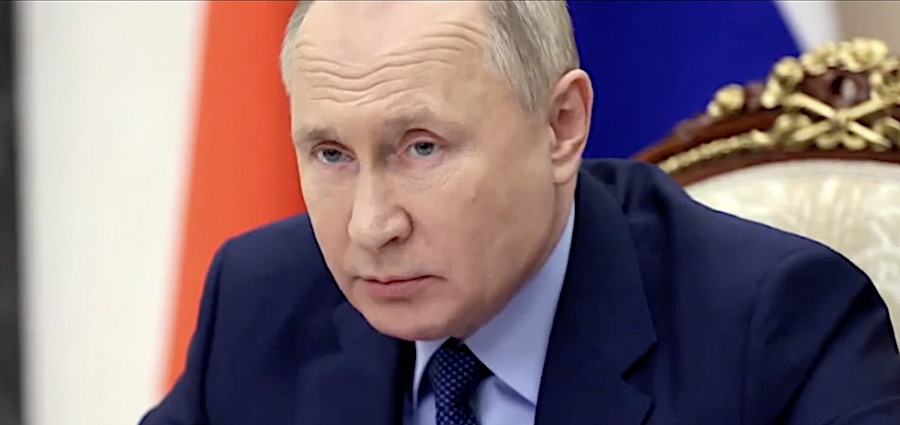MOSCOW, RUSSIA. (THECOUNT) — In a significant policy shift, Russian President Vladimir Putin has approved changes to his country’s nuclear doctrine, broadening the circumstances under which nuclear weapons can be deployed. The announcement comes just days after the U.S. authorized Ukraine to use long-range missiles for strikes within Russian territory, further intensifying the ongoing conflict. The Russian Defense Ministry said on Tuesday that it shot down six ATACMS missiles in the western Bryansk region, shortly before the Kremlin updated its nuclear weapons doctrine to allow for nuclear strikes.
Key Changes to Russia’s Nuclear Doctrine:
|
Advertisement |
The revised doctrine expands the conditions that justify Moscow’s use of nuclear weapons. Under the new guidelines, Russia can now employ nuclear weapons in response to aggression by a non-nuclear state if that state is supported by a nuclear power. This marks a departure from the previous policy, which was more narrowly focused on direct existential threats or conventional military aggression against Russia.
The revised policy also includes additional scenarios where nuclear retaliation may be considered, such as:
Deployment of missile defense systems or medium- and short-range ballistic missiles by an adversary.
Use of precision non-nuclear hypersonic weapons, strike drones, or directed energy weapons against Russian forces or territory.
Attacks involving weapons of mass destruction or conventional forces threatening the country’s territorial integrity.
A report from The Moscow Times states that the changes also emphasize the use of nuclear weapons to counter threats from conventional weapons, further blurring the lines between conventional and nuclear warfare.
Context and U.S. Approval of ATACMS:
The timing of the announcement appears to align with heightened tensions following the U.S. decision to allow Ukraine to deploy MGM-140 Army Tactical Missile System (ATACMS) for deep strikes within Russian territory. Kyiv recently confirmed the use of these missiles in a strike against a Russian target in the border region, marking the first such use since the conflict began.
When reports of the U.S. authorization surfaced, Kremlin officials warned that it could provoke a major escalation in the war. Putin’s approval of the revised nuclear doctrine now appears to be a direct response to this development.
Putin’s Warning to the West:
Putin had foreshadowed these changes in September, stating that the updates were necessary to address emerging threats. While he did not specifically name Ukraine, his comments suggested that the conflict and increasing Western involvement were driving the policy shift.
“The proposed changes clearly set the conditions for Russia to transition to using nuclear weapons,” Putin said during a televised meeting with senior officials earlier this year. He framed the revisions as part of the “utmost measure of protection of the country’s sovereignty.”
The revised doctrine reinforces that the ultimate authority to deploy nuclear weapons rests solely with the Russian President. Putin’s remarks and the timing of the policy’s release send a clear warning to NATO and the U.S. about the potential consequences of their support for Ukraine.
Kremlin’s Stance and Public Reaction:
Kremlin spokesperson Dmitry Peskov described the timing of the policy announcement as deliberate but declined to comment on whether the U.S. approval for ATACMS directly influenced the changes. “The updates reflect our adaptation to new threats,” Peskov stated, adding that they were in line with Russia’s broader strategic objectives.
International analysts have expressed concern over the escalating rhetoric and the implications of the policy changes. By broadening the conditions under which nuclear weapons might be used, Moscow is signaling its readiness to escalate the conflict if its red lines are crossed.
Implications for the Conflict:
The revised doctrine underscores Russia’s growing frustration with what it perceives as NATO’s deepening involvement in the war. Ukrainian forces, bolstered by Western weapons, have increasingly targeted areas within Russian-controlled territory, intensifying the conflict.
Kyiv’s recent use of U.S.-provided ATACMS missiles is likely to further strain diplomatic efforts and raise the stakes in the ongoing war. As NATO and its allies evaluate their next moves, Russia’s updated nuclear doctrine will undoubtedly weigh heavily on strategic calculations.
Looking Ahead:
The changes to Russia’s nuclear doctrine highlight the fragile and volatile nature of the current geopolitical landscape. As the war in Ukraine grinds on, the potential for miscalculation grows, raising fears of an escalation that could draw in additional actors and escalate the conflict beyond the region.
Observers are now closely watching Kyiv, NATO, and Washington for their responses to Moscow’s latest maneuver. Meanwhile, the world grapples with the chilling implications of a doctrine that appears to make the use of nuclear weapons more conceivable.
DEVELOPING::


